I’d like to quote from the City Corporation’s little booklet on Fountains – it’s rather poetic in places.
‘Fountains are an important sensory diversion in the urban scene of the City. Whether a municipal drinking fountain or a monumental water feature, they provide a rich diversity of sculptural form, movement and sound. The movement provided by the water of a fountain is probably its most fascinating element. Still water seems lifeless, but when given motion, either by spurting, spraying, spouting, undulating or tumbling, it becomes full of life and vitality. Of itself colourless, water can direct and refract light rays, and when it is in the form of a fine mist, it can disperse all the colours of the spectrum. The sound of a fountain is also one of its most essential and most overlooked attractions. Whether the water is crashing, whooshing, gurgling or gently lapping, sound is an integral part of a fountain’s aesthetic appeal. This can improve significantly the quality of a space, not only by adding the sound of water, but also by blocking out the less attractive sounds of the City’.
So I was inspired to search out some nice examples and I shall start with this absolute beauty in the quadrangle at St Bartholomew’s Hospital (EC1A 7BE). Created in 1859, it shows naked boys holding aloft a shell with dolphin-esque waterspouts …

You can read the full story about its construction and the part it played in Bart’s history here on the Bart’s Heritage website.
Originally the water was projected much higher in order to be seen above the shrubs that had then recently been planted …

Just across the road is the West Smithfield Garden (EC1A 9BD). Waste ground for a time, the site was finally laid out as public gardens by the Corporation of London and opened to the public in 1872 …
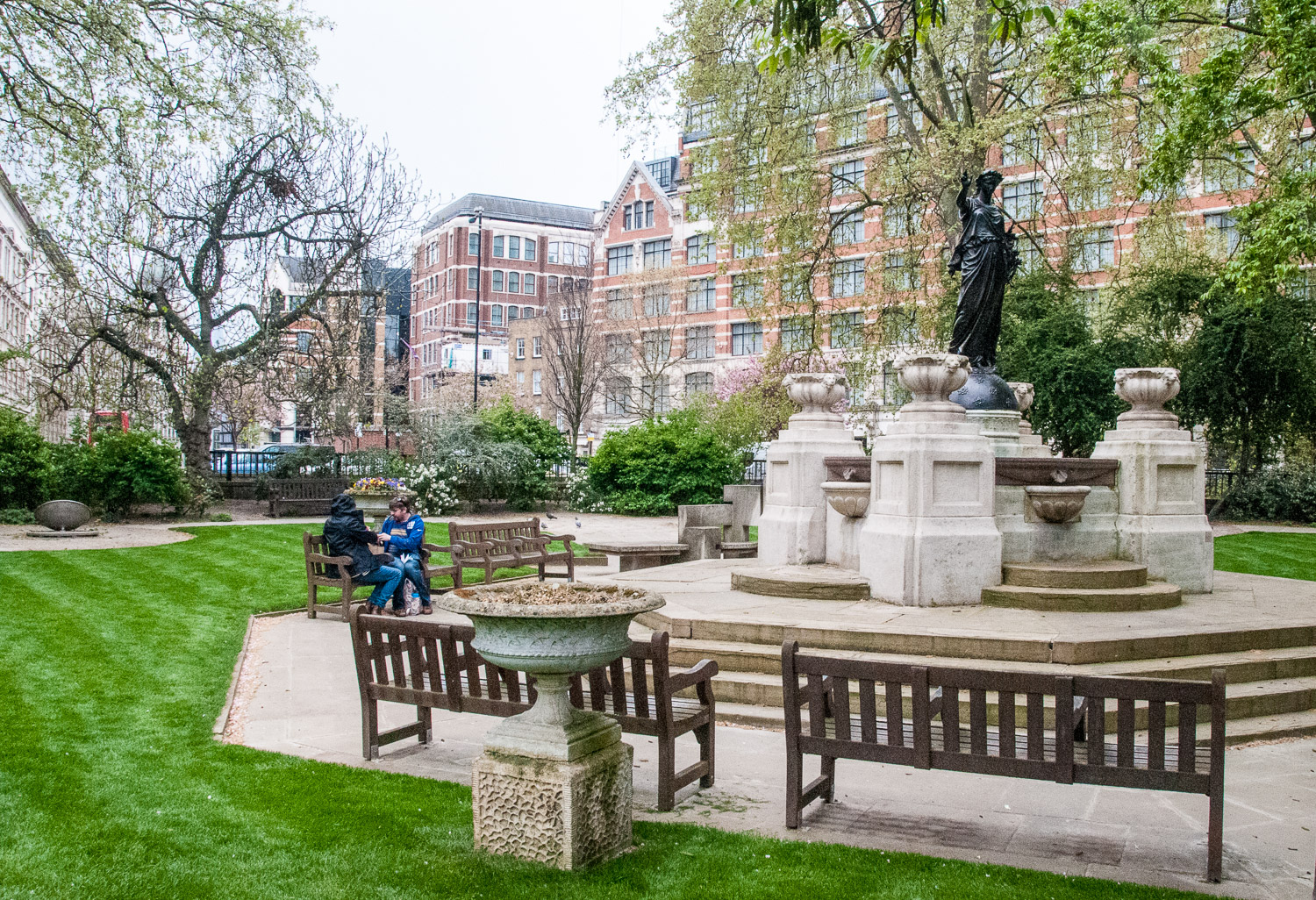
A drinking fountain with a bronze figure representing ‘Peace’ was erected in 1873 a few years after the armistice between France and Prussia was signed in 1871 …
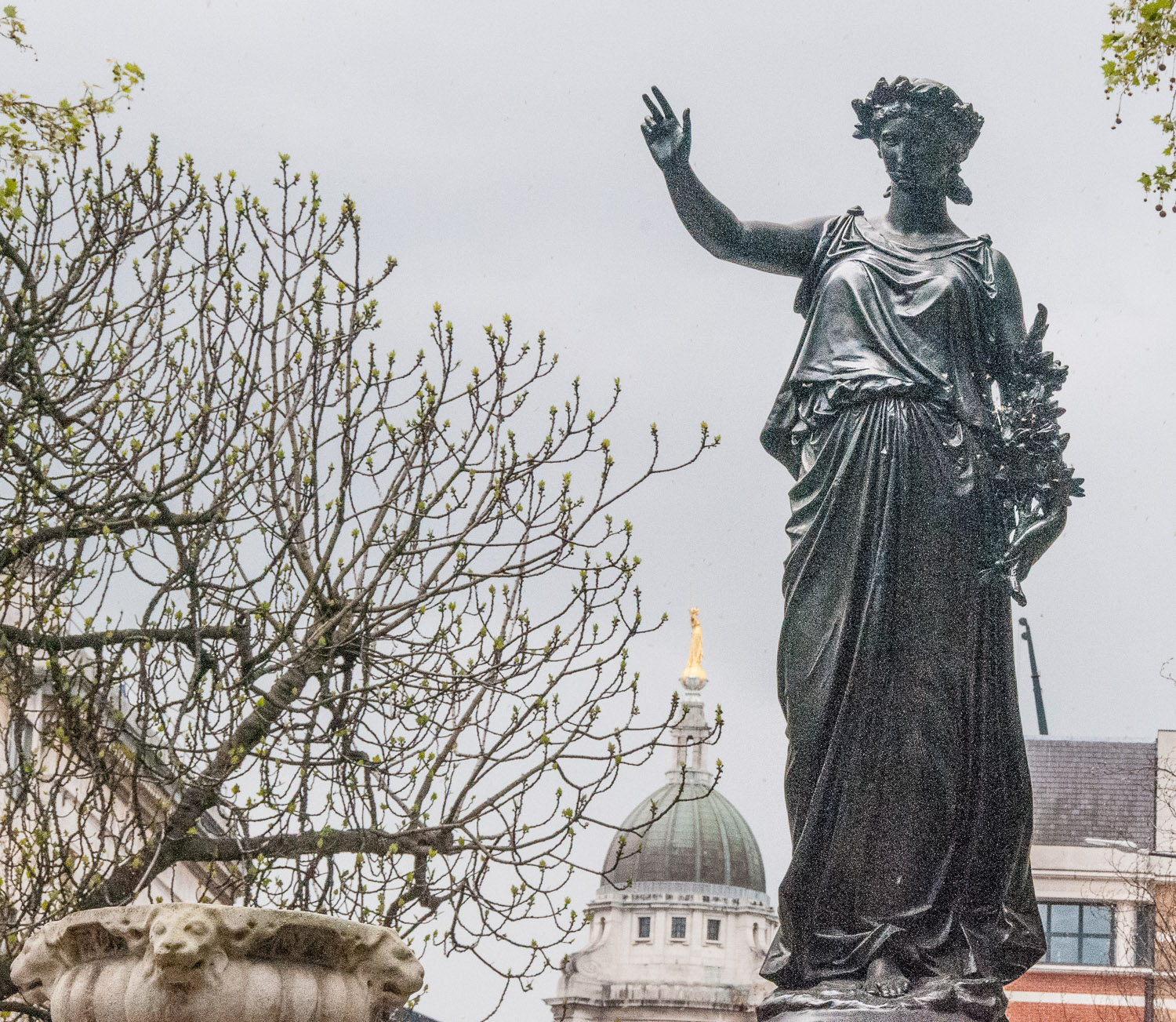
You can see Lady Justice atop the Old Bailey in the background.
Before you leave the Bart’s area do visit the interesting little Hospital museum just inside the entrance to the quadrangle.
The St John Zachary or Goldsmith’s Garden in Gresham Street EC2V 7HN) is a haven of peace in the bustling City. Walk under the stunning golden leopard’s head symbol of the Goldsmith’s Company …
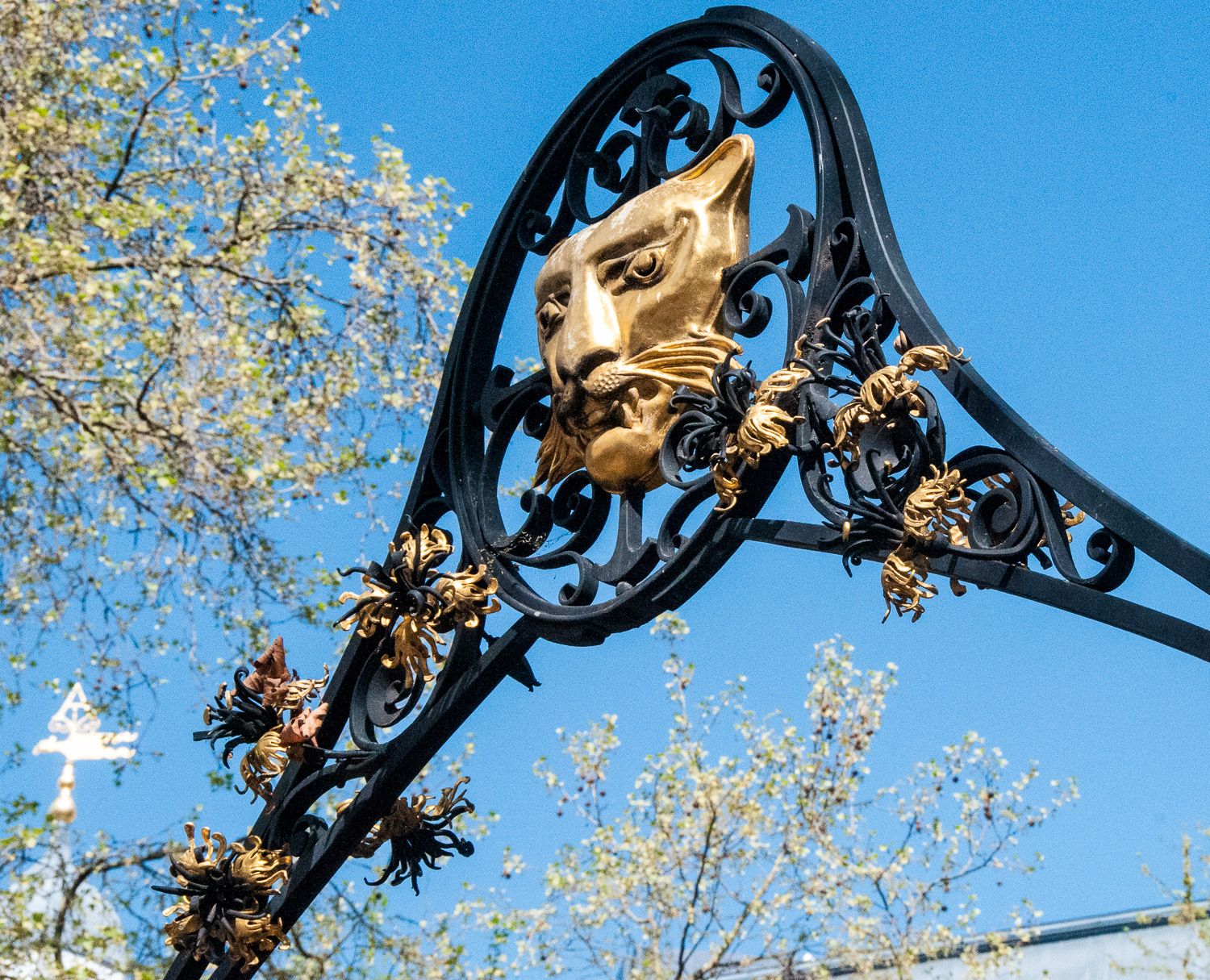
Down the steps in the sunken garden you will find this pretty little fountain …
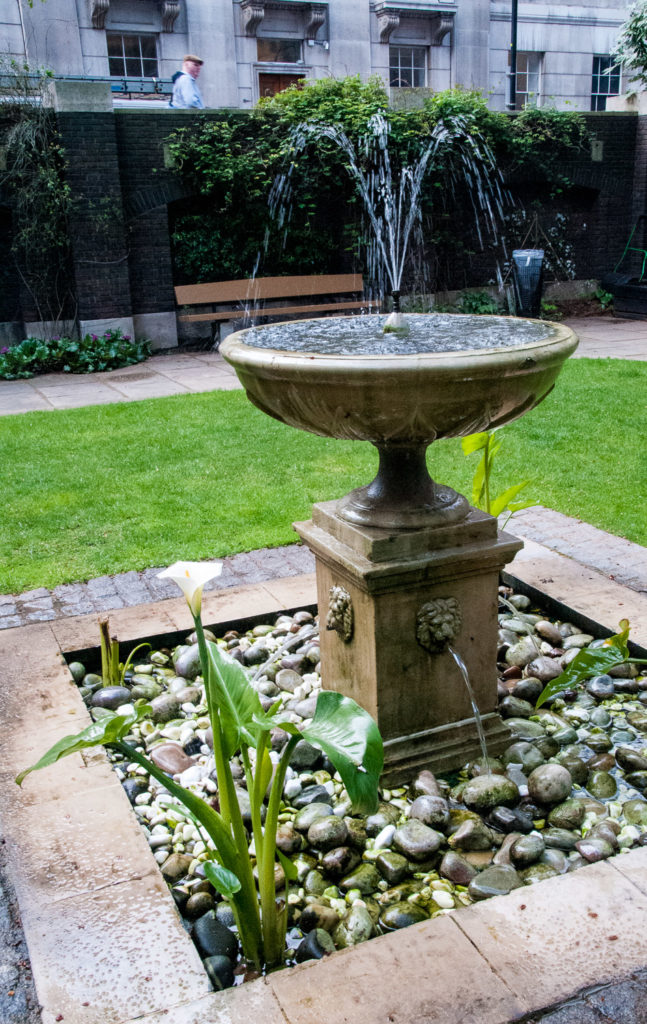
You can read more about the garden and an interesting nearby sculpture called The Three Printers in my City Gardens blog.
Postman’s Park’s fountain is rather modest (EC1A 7BT) …

And finally, on the north side of Blackfriars Bridge is one of my favourites, recently liberated from behind hoardings and nicely restored (but sadly no longer pouring water) …

The pretty lady represents ‘Temperance’ and she originally stood outside the Royal Exchange. The fountain was inaugurated by Samuel Gurney, MP, the Chairman of the Metropolitan Free Drinking Fountains Association, on 27 July 1861 and you can read more about him, and the Association, in my earlier blog Philanthropic Fountains.
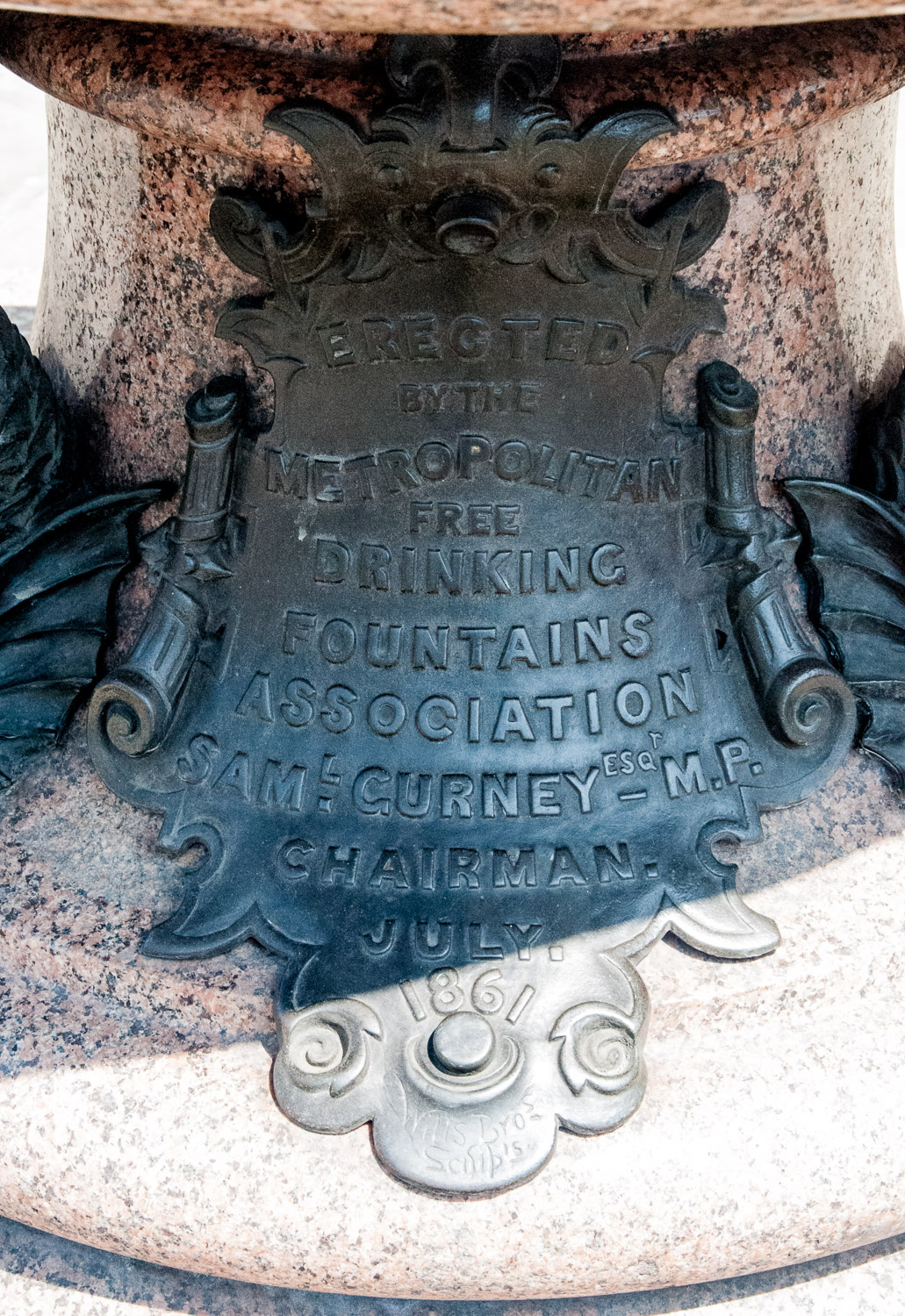
This week’s fountains have been very traditional.
Next week I will look at more modern versions, including those that tend to pop up out of the ground …

Don’t forget to follow me on Instagram :
https://www.instagram.com/london_city_gent/
